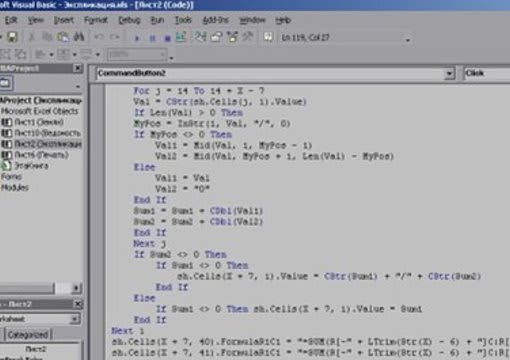
The critical question to ask is whether there is an easier way. Sometimes it makes sense to use other ways to achieve your aims. VBA programming is a powerful solution, but it is not always the optimal approach. Use VBA programming to interact with the details of two or more Office applications at the same time and then modify the content in one application based on the content in another.

Interaction between Office applicationsĭo you need to copy all of your contacts from Outlook to Word and then format them in some particular way? Or, do you need to move data from Excel to a set of PowerPoint slides? Sometimes simple copy and paste does not do what you want it to do, or it is too slow. For example, you might want to prompt users to take some particular action when they open, save, or print a document. There are times when you want to encourage or compel users to interact with the Office application or document in a particular way that is not part of the standard application. Almost any formatting or editing change that you can do by hand, can be done in VBA. If it is a change that you have to do hundreds of times, it certainly is worth considering. If you have a change that you have to make more than ten or twenty times, it may be worth automating it with VBA. For example, have you ever changed the style of the paragraph at the top of each page in Word? Have you ever had to reformat multiple tables that were pasted from Excel into a Word document or an Outlook email? Have you ever had to make the same change in multiple Outlook contacts?

VBA is effective and efficient when it comes to repetitive solutions to formatting or correction problems. There are several principal reasons to consider VBA programming in Office. Office Add-ins have a small footprint compared to VSTO Add-ins and solutions, and you can build them by using almost any web programming technology, such as HTML5, JavaScript, CSS3, and XML. Interested in developing solutions that extend the Office experience across multiple platforms? Check out the new Office Add-ins model. Finally, it includes some tips and ways to avoid some common programming frustrations and missteps. It explores the VBA language and the out-of-the-box tools that you can use to work with your solutions. This article explores some of the primary reasons to leverage the power of VBA programming.
#Visual basic for applications excel 2010 code
For example, you could write some VBA code that displays a pop up message that reminds users to save a document to a particular network drive the first time they try to save it. (In fact, the automation of repetitive tasks is one of the most common uses of VBA in Office.)īeyond the power of scripting VBA to accelerate every-day tasks, you can use VBA to add new functionality to Office applications or to prompt and interact with the user of your documents in ways that are specific to your business needs. Further, if it can be done once with VBA, it can be done just as easily a hundred times. The great power of VBA programming in Office is that nearly every operation that you can perform with a mouse, keyboard, or a dialog box can also be done by using VBA.

There are many different ways to author, format, and manipulate documents, email, databases, forms, spreadsheets, and presentations. The Office suite of applications has a rich set of features. This article is for experienced Office users who want to learn about VBA and who want some insight into how programming can help them to customize Office. You can perform these tasks and accomplish a great deal more by using Visual Basic for Applications (VBA) for Office-a simple, but powerful programming language that you can use to extend Office applications.
#Visual basic for applications excel 2010 how to
Are you facing a repetitive clean up of fifty tables in Word? Do you want a particular document to prompt the user for input when it opens? Are you having difficulty figuring out how to get your contacts from Microsoft Outlook into a Microsoft Excel spreadsheet efficiently?


 0 kommentar(er)
0 kommentar(er)
